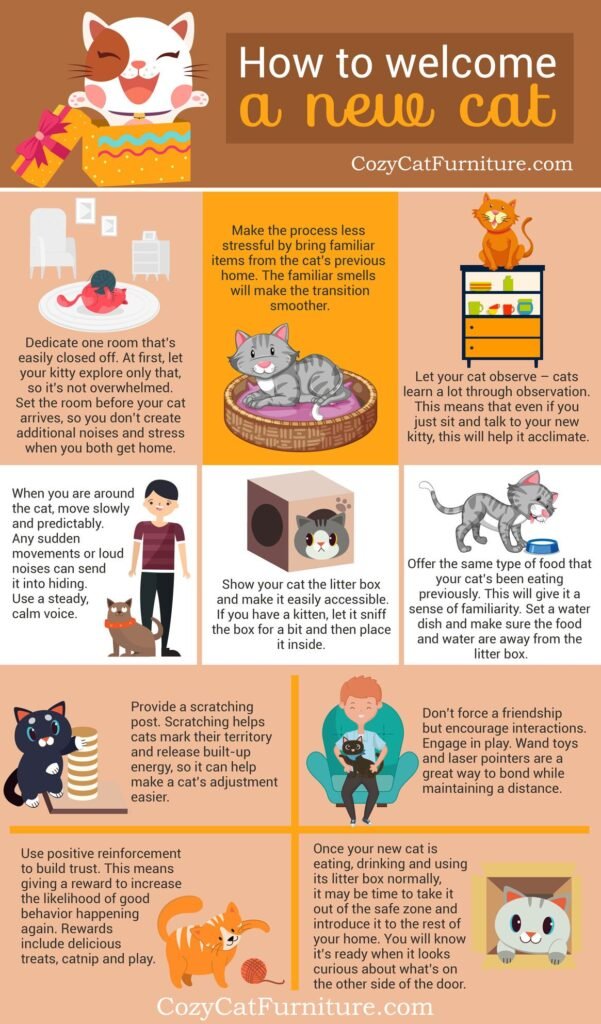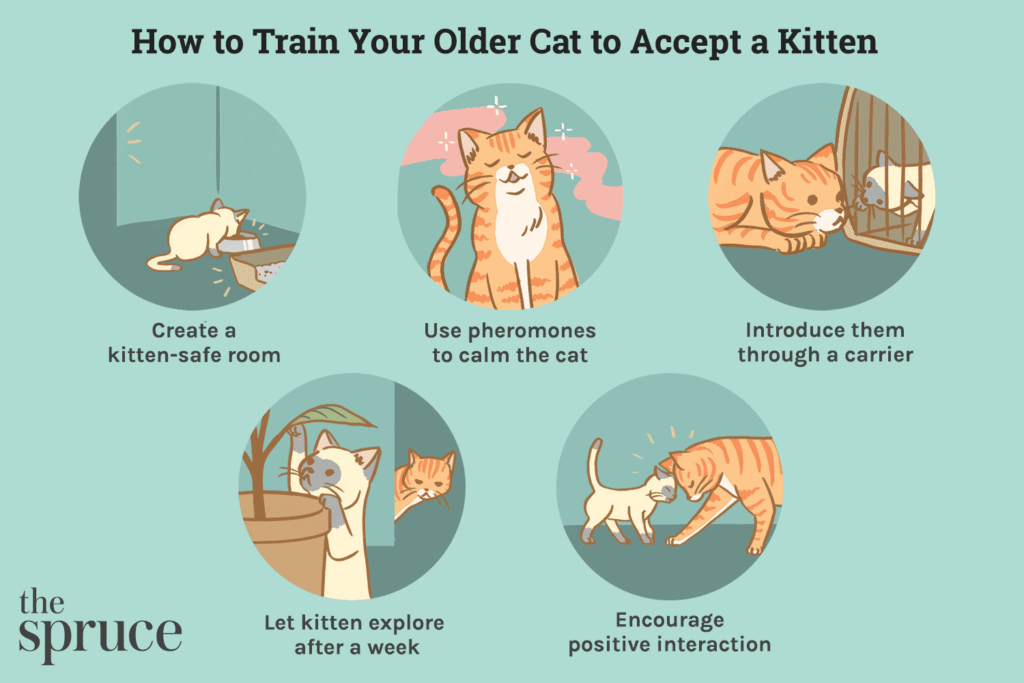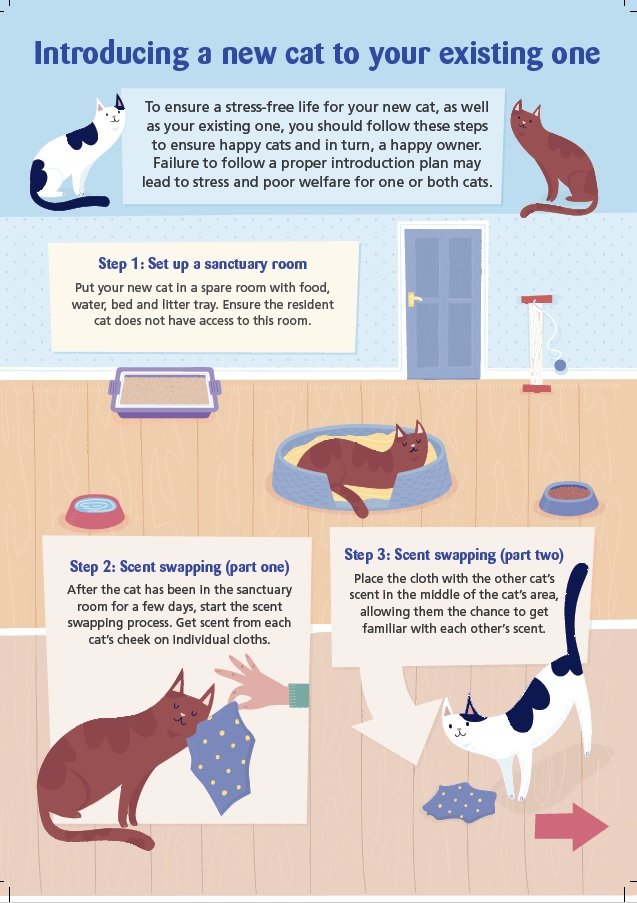So you’ve decided to add a new furry friend to your family and bring home a new cat. Exciting times lie ahead! But before you can bond with your new feline companion, it’s important to make sure the introduction to your home goes smoothly. Introducing a new cat to your home can be a delicate process, but fear not – we’ve got you covered with some top tips that will help create a stress-free and harmonious transition for both your new cat and your existing pets. From creating a safe space to gradual introductions, read on to discover the best ways to make your new cat feel right at home.
Prepare Your Home
Create a Dedicated Safe Space
Before bringing your new cat home, it’s important to set up a dedicated safe space where they can feel secure and adjust to their new surroundings. This could be a spare room or a cozy corner in your house. Make sure the area is comfortable and equipped with a litter box, food and water bowls, and a soft bed or blanket for your new feline friend to relax on.
Remove Hazards
Prior to bringing your new cat home, it’s essential to remove any potential hazards from your living environment. Take a thorough look around your home and ensure that there are no poisonous plants, toxic chemicals, or dangerous objects that could harm your new furry companion. Keep in mind that cats can be curious and agile, so it’s crucial to secure loose wires, cords, and fragile items.
Provide Food, Water, and Litter Box
To help your new cat feel at home, make sure to provide them with fresh food and water bowls in their designated safe space. Additionally, ensure that they have easy access to a clean and well-maintained litter box. Cats are known for their cleanliness, so maintaining a hygienic litter box is crucial for their comfort and well-being.
Supply Scratching Posts and Toys
To prevent your new cat from damaging your furniture, it’s important to provide them with appropriate outlets for their natural scratching instincts. Invest in scratching posts or scratching pads to satisfy their need to scratch and stretch. Additionally, offering a variety of stimulating toys will help keep your new cat entertained and engaged, especially during their transition period.
Introduce Scent Exchange
Use a Soft Cloth or Brush
One of the most effective ways to introduce a new cat to your existing cats is through scent exchange. Begin by using a soft cloth or brush to collect the scent of your new cat. Gently rub the cloth or brush on their fur, focusing on areas like their cheeks, chin, and base of their tail. This will help transfer their unique scent onto the cloth.
Rub the Cloth on Your Existing Cats
Once you have collected the scent of your new cat, take the cloth and rub it on your existing cats. This helps them become familiar with the scent of the new arrival without direct contact. By sharing scents, you’re laying the groundwork for a smoother introduction and minimizing any potential territorial issues.
Repeat the Process with Existing Cat
To complete the scent exchange process, repeat the process by using a separate cloth or brush to collect the scent of your existing cat. Then, rub this cloth on your new cat. By doing so, you’re allowing both cats to familiarize themselves with each other’s scents, making the introduction process less daunting.

This image is property of cdn-aahmh.nitrocdn.com.
Gradual Introduction
Keep the New Cat Isolated
When you first bring your new cat home, it’s crucial to keep them isolated in their dedicated safe space for a period of time. This allows them to acclimate to their new environment without feeling overwhelmed. Ensure that their safe space is comfortable and contains all the necessary amenities they need.
Allow Smell and Sound Exchanges
While the new cat is in their designated safe space, you can begin allowing them to have scent and sound exchanges with your existing cats. This can be done by placing their food bowls on opposite sides of a closed door, allowing the cats to smell and hear each other without direct interaction. Gradually increase the duration of these exchanges over time.
Use Gated Barriers
Once your new cat has become comfortable in their safe space and has had some successful scent and sound exchanges, you can start using gated barriers to further their introduction. This involves using baby gates or pet gates to create visual barriers while still allowing the cats to see and smell each other. This method helps them adjust to each other’s presence in a controlled environment.
Start Supervised Physical Encounters
As the cats become more familiar with each other’s scents and presence, you can gradually introduce supervised physical encounters. Start by allowing short face-to-face interactions with close supervision. If any signs of aggression or fear are displayed, separate the cats and continue with scent exchanges and gated barriers until they are more comfortable. Patience is key during this step, as each cat will adjust at their own pace.
Positive Reinforcement
Reward with Treats and Affection
Positive reinforcement is a powerful tool when introducing a new cat to your home. Whenever your cats have positive interactions or show signs of progress, reward them with treats and affection. This helps create positive associations and strengthens the bond between them. Remember to be patient and consistent with your rewards to encourage desirable behavior.
Use Clicker Training
Clicker training is an effective positive reinforcement technique that can be used during the introduction process. By associating the sound of a clicker with a treat, you can train your cats to associate positive experiences with each other’s presence. Use the clicker to mark desirable behaviors, such as calm and friendly interactions, and reward them accordingly.
Teach Desirable Behaviors
During the introduction process, it’s important to teach desirable behaviors to both your new and existing cats. This includes teaching them to come when called, sit, or stay. By establishing a foundation of good behavior, you can help create a harmonious environment for all your feline companions.
Address Problematic Behaviors
If any problematic behaviors arise during the introduction process, it’s important to address them promptly. This includes aggression, inappropriate scratching, or litter box issues. Consult with a veterinarian or behaviorist who can provide guidance and support in resolving these issues. Remember, every cat is unique, and it may take time and effort to address and correct any problematic behaviors.

This image is property of www.thesprucepets.com.
Monitor Stress Levels
Observe Body Language
During the introduction process, it’s crucial to closely observe your cats’ body language for any signs of stress, aggression, or fear. Common signs of stress include hissing, growling, flattened ears, raised fur, or attempts to hide. By recognizing these signs early on, you can intervene and make adjustments to ensure the introduction is as stress-free as possible.
Look for Signs of Aggression or Fear
Aggression and fear are common emotions during cat introductions. It’s essential to understand that these emotions can be normal and may occur as your cats establish their hierarchy. However, if aggression or fear becomes excessive or prolonged, it’s important to seek professional advice to ensure a safe and peaceful environment for all your cats.
Consider Using Feliway Diffusers
Feliway diffusers are a popular tool to help reduce stress and create a calming atmosphere for cats. These diffusers release synthetic pheromones that mimic the natural facial pheromones produced by cats when they feel safe and secure. Placing Feliway diffusers in the areas where your cats spend the most time can help alleviate stress and promote a sense of calm during the introduction process.
Consult with a Veterinarian or Behaviorist
If you encounter difficulties during the introduction process or if you have concerns about your cats’ behavior, it’s always advisable to consult with a veterinarian or behaviorist. These professionals have the knowledge and experience to assess the situation, provide tailored advice, and help create a peaceful coexistence for all your cats.
Establish Feeding and Play Routines
Feed Cats Separately at First
During the initial stages of the introduction process, it’s recommended to feed your cats separately. This helps prevent any food-related conflicts or competition that could lead to tension or aggression. Ensure that each cat has their own designated feeding area to enjoy their meals in a calm and stress-free environment.
Gradually Move Food Bowls Closer
As your cats become more comfortable with each other’s presence, you can gradually move their food bowls closer together. Start by placing them in separate rooms with closed doors and gradually move them closer over time. This gradual approach allows your cats to associate positive experiences, like mealtime, with the presence of the other cat.
Designate Playtimes for Each Cat
Providing individual playtimes for each cat is essential to their well-being and helps maintain a positive environment. Set aside dedicated play sessions for each cat, using interactive toys that cater to their individual interests and preferences. This not only helps in bonding individually with your cats, but it also prevents conflicts that may arise during group play.
Ensure Sufficient Individual Attention
While it’s important to encourage socialization between your cats, it is equally important to provide each cat with individual attention and one-on-one time. Maintain your existing routines, such as cuddling and grooming, with your existing cats, ensuring that they don’t feel neglected or overshadowed by the new addition. This will help prevent jealousy and promote a harmonious household.

This image is property of cdn.shopify.com.
Provide Vertical Spaces
Offer Cat Trees or Shelving
Cats naturally enjoy climbing and perching in high places, so providing them with vertical options can be highly beneficial during the introduction process. Consider investing in cat trees, shelving, or wall-mounted perches where your cats can climb, explore, and observe their surroundings from a higher vantage point. This aids in reducing potential territorial disputes and promotes a sense of security.
Create Vertical Hiding Spots
In addition to vertical spaces, it’s crucial to provide vertical hiding spots for your cats. This can be achieved by using tall scratching posts with hiding compartments or by strategically placing cozy blankets or beds on elevated surfaces. These hiding spots give your cats a sense of security and privacy, allowing them to retreat and relax when they feel overwhelmed during the introduction process.
Install Window Perches
Window perches are a great addition to your cat’s vertical spaces. They provide a perfect spot for your cats to bask in the sun, observe the outdoor activities, and enjoy the view. This can be particularly helpful during the introduction process, as it allows your cats to distract themselves and feel more at ease in their environment.
Promote Territory Expansion
By providing vertical spaces, you not only offer your cats physical outlets but also help promote the expansion of their territories. As they become more comfortable and confident, they will start to explore higher areas of your home and establish their own territories. This expansion encourages a sense of ownership and helps prevent conflicts over space.
Encourage Socialization
Engage in Interactive Play
Encouraging socialization through interactive play is an effective way to build positive relationships between your cats. Use toys that encourage chasing, pouncing, and interactive play sessions to engage both your new and existing cats. This shared activity helps them bond, release energy, and associate each other’s presence with positive experiences.
Schedule Joint Play Sessions
In addition to individual play sessions, it’s important to schedule joint play sessions with all your cats. These group playtimes provide an opportunity for them to interact, socialize, and strengthen their relationships. Start with short play sessions and gradually increase the duration as your cats become more comfortable with each other.
Supervise and Mediate Conflicts
While it’s important to encourage socialization, it’s equally important to supervise your cats during their interactions, especially in the early stages of the introduction process. Watch for any signs of aggression or fear and be prepared to mediate conflicts by separating them if necessary. Redirect their attention to enjoyable activities and reward positive behaviors to foster a peaceful coexistence.
Foster Positive Bonding Experiences
To facilitate a positive relationship between your new and existing cats, it’s essential to create opportunities for them to bond. This can be achieved through activities like grooming sessions, feeding treats together, or engaging in calm cuddle sessions as a group. These positive bonding experiences help build trust and reinforce positive associations, strengthening the bond between your cats.

This image is property of branchsites.cats.org.uk.
Allow Personal Space
Respect Your Cat’s Privacy
Just as humans need personal space, your cats also require privacy. It’s important to respect your cat’s need for alone time and provide them with areas where they can retreat and relax undisturbed. Whether it’s a cozy nook, a separate room, or a covered bed, ensuring that your cats have their own personal space helps reduce stress and promotes a harmonious environment.
Provide Multiple Resting Areas
Cats love to sleep and rest in different spots throughout the day. To accommodate this, provide multiple resting areas around your home. This can be achieved through cozy cat beds, plush blankets, or even strategically placed cardboard boxes. Having multiple resting areas allows each cat to have their own preferred spot, minimizing potential conflicts over sleeping spaces.
Avoid Forcing Interactions
While it’s natural to want your cats to get along, it’s important to avoid forcing interactions between them. Forcing interactions can lead to stress, anxiety, and potentially negative associations with one another. Instead, give them the opportunity to approach each other at their own pace, ensuring that interactions are voluntary and positive.
Create Individualized Comfort Zones
Each cat has their own unique personality and comfort levels. It’s crucial to create individualized comfort zones for each cat where they can feel safe and secure. This can be achieved by providing separate scratching posts, litter boxes, and resting areas for each cat. By catering to their individual needs, you can help prevent conflicts and create a harmonious living space.
Be Patient and Persistent
Realize Adjustment Periods Vary
It’s important to understand that every cat is different, and the adjustment period will vary from cat to cat. Some cats may adapt quickly and form bonds with ease, while others may take more time to feel comfortable in their new environment. Be patient and allow each cat to adjust at their own pace, providing support and guidance along the way.
Continue Gradual Introductions
Even after the initial introduction process, it’s essential to continue with gradual introductions and monitored interactions. Some cats may require a longer adjustment period, and it’s important to maintain a controlled environment until all cats are comfortable and exhibit positive behavior consistently.
Maintain Consistency in Routine
Cats thrive on routine and familiarity, so maintaining consistency is key during the introduction process. Keep feeding, play, and sleep schedules consistent for all your cats. This helps reduce stress and provides a sense of stability during their transition into a multi-cat household.
Seek Professional Help if Necessary
If despite your best efforts, the introduction process is not progressing as desired or if there are significant conflicts between your cats, do not hesitate to seek professional help. A veterinarian or behaviorist with experience in cat introductions can provide invaluable guidance, tailored solutions, and support to ensure the well-being of all your feline companions.
Introducing a new cat to your home can be an exciting and rewarding experience. By following these top ways to introduce a new cat to your home, you can create a smooth and harmonious transition for all your furry friends. Remember, patience, consistency, and a positive approach are key to fostering healthy relationships and a happy multi-cat household.

This image is property of www.wikihow.com.

